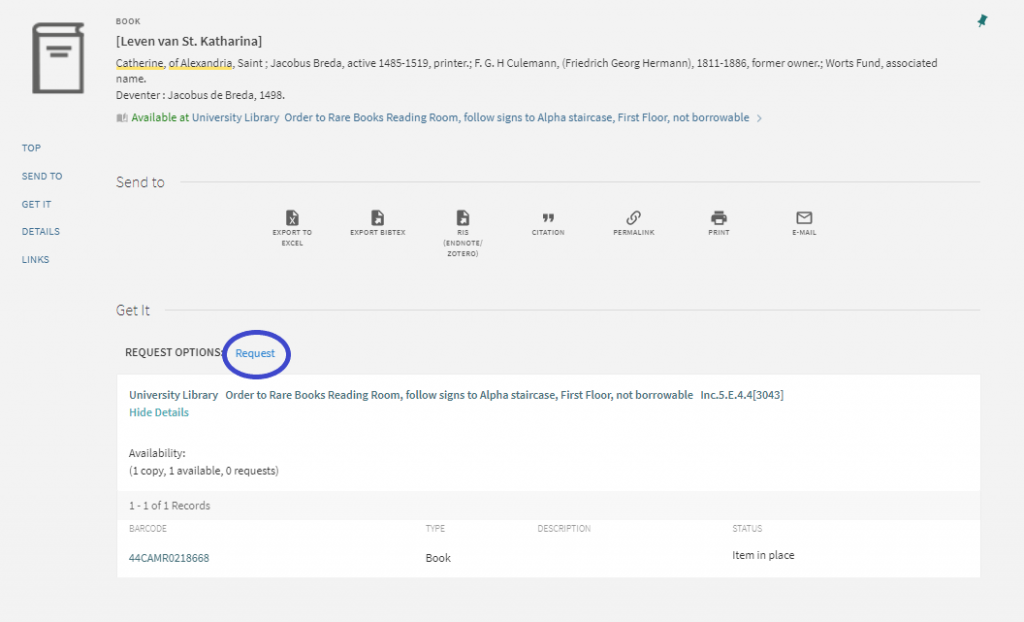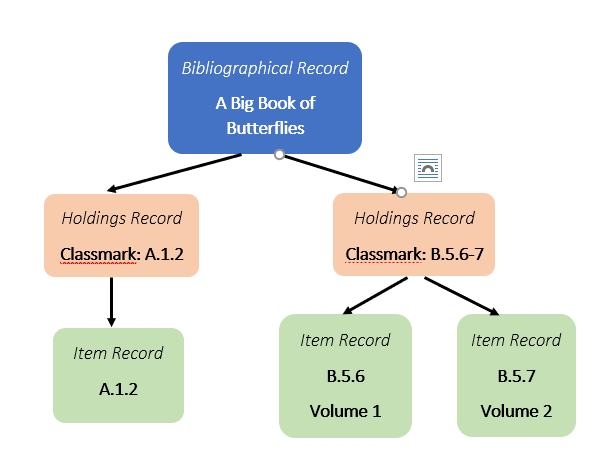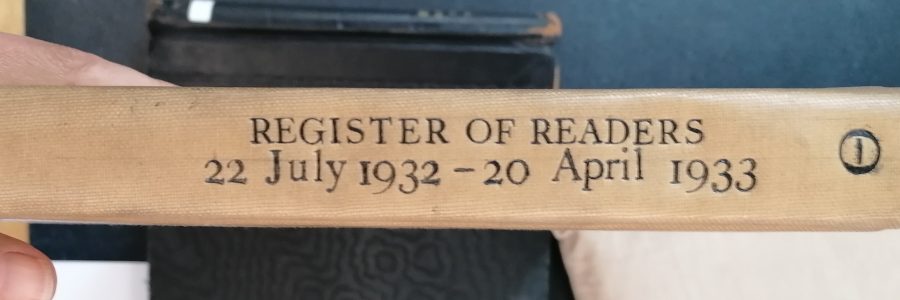
From ‘Register of Readers’ to online requesting
Eagle-eyed users of the Library’s iDiscover catalogue may have noticed a new feature when they log in and search for Rare Books; a small but very significant blue Request button has appeared by many records:
This change means that for around 85% of the approximately one million volumes classed as Rare Books, Library members can place a request online through the catalogue from the comfort of their home, workplace or even from within the Rare Books Room itself. A member of the team will fetch the item, and an automated email will let the requester know when their book is ready to be consulted. This brings Rare Books in line with the modern collections across the Library, and offers a much more convenient service. It also gives the Library very useful information about which books are being used, to help us focus our conservation, digitisation and cataloguing upgrading work. The procedure for requesting Rare Books online is explained in full here: https://www.lib.cam.ac.uk/collections/departments/rare-books/rare-books-services
This is the result of a project first proposed in 2018, and has come to fruition thanks to a highly collaborative effort across several departments of the Library, involving cataloguing work by all members of the Rare Books team, data management by the Digital Services team, and guidance from the Reader Services and Reference teams. The process was more complex than simply ‘switching on’ online requesting, and the patience of colleagues has been hugely appreciated in getting us to this point. In order to request a book through the online catalogue, it has to have what in cataloguing terms is called an Item Record. Within library catalogues each edition of a work has a Bibliographical Record to describe the author, title, date and so forth. Each copy of that work is assigned a Holdings Record, which includes the classmark (sometimes known as shelfmark, or call number); a Bibliographical Record can have several Holdings if the Library owns more than one copy. Each Holding then has one or more Item Records, depending on if it is in one or more physical units. In the diagram below, the Library has two separate copies of the Big Book of Butterflies, one of which has been bound in two volumes.
To request material through the online catalogue, every Holdings Record must have its associated Item Record/s. These have been included in all records added to the computerised catalogue since 1995 for newly acquired titles. They were not included, however, in the retrospective cataloguing of earlier material from the 200+ volumes of typed ‘guardbook’ catalogue, which was undertaken in the early 2000s. This meant that while the online catalogue contained 930,000 holdings records for Rare Books, only 490,000 of these had item records. Before online requesting could be possible, the remaining 440,000 holdings records needed their items adding.
In early 2019 Rare Books staff undertook preparatory work for future online requesting by tidying up the catalogue records for 25 selected classes, ensuring that there were records for every book, that duplicate records were removed, and that all titles had their item records. Junior members of staff learned new cataloguing skills, and we were able to make many hundreds of books discoverable which had been missing from iDiscover. This project was then extended and accelerated during Covid lockdown: we were unable to take collection materials home with us, but could upgrade the catalogue ready for our return into the building. This involved working on the converted guardbook catalogue records for titles bound in multiple volumes, which generally had only an open-ended classmark such as Ely.a.105- . Team members looked at the bibliographical records for these, established the number of physical volumes (in this case two), and changed the classmark to reflect this; in this case Ely.a.105-106, also upgrading the record with notes that Ely.a.105 is volume 1, and Ely.a.106 is volume 2. For the purposes of requesting through the online catalogue, this detailed information can be essential; in this record for a biography of Italian economists, there are 50 volumes, and without knowing which economists are in which volume, the reader can be left at sea. Across the 36 months from summer 2019 to summer 2022, staff added 2100 new bibliographical records for items not yet represented in the catalogue, and a remarkable 21,000 item records to multi-volume sets. It was also possible to automate the adding of item records to titles in single volumes, and colleagues in Digital Services ran scripts which added an immense 320,000 item records.
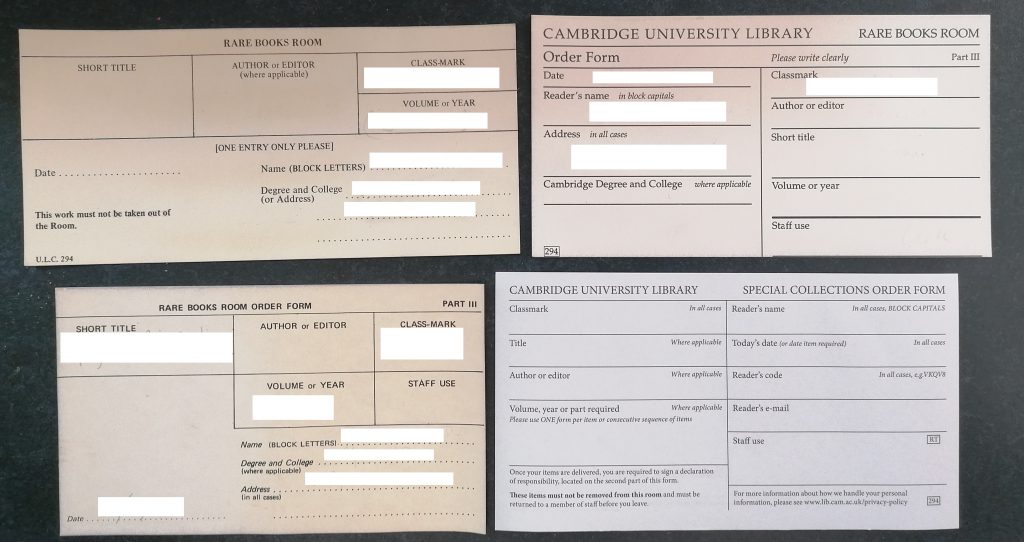
Requesting Rare Books has always involved a secure data trail to ensure that both staff and readers know where collection material is at all times. A note is left at the shelf whenever a book is removed, with the name of the person requesting it and the date, and regular readers will be familiar with the receipt they sign for each volume. The paper slips for this process have evolved over time; it is no longer necessary to state one’s degree course, for example, a relic from the days when senior members of the University could borrow Rare Books. In the early twentieth century, what were then known as Select Books were requested in Room Theta of the Old Schools alongside Manuscripts readers, and a handwritten register was kept of the names of visitors and the books they were using. A sample page of requests from this week 100 years ago is reproduced below. Amongst those named on this page is Miss K.T. Butler who went on to be Mistress of Girton College; her collection of Italian literature was purchased by the University Library in 1951.
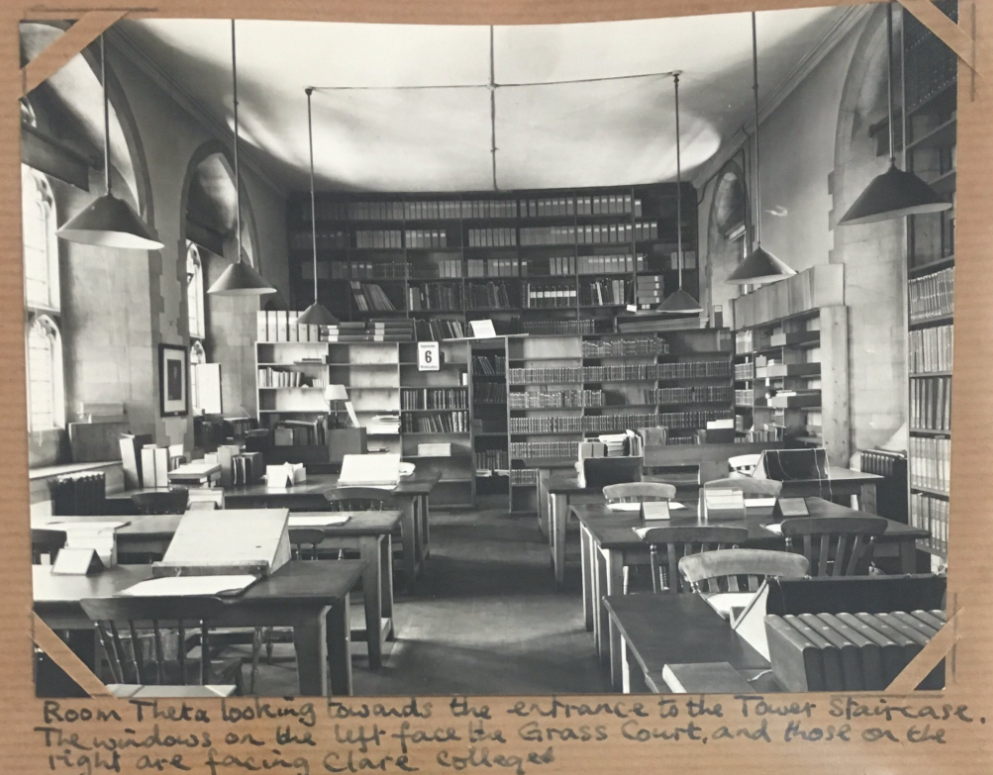
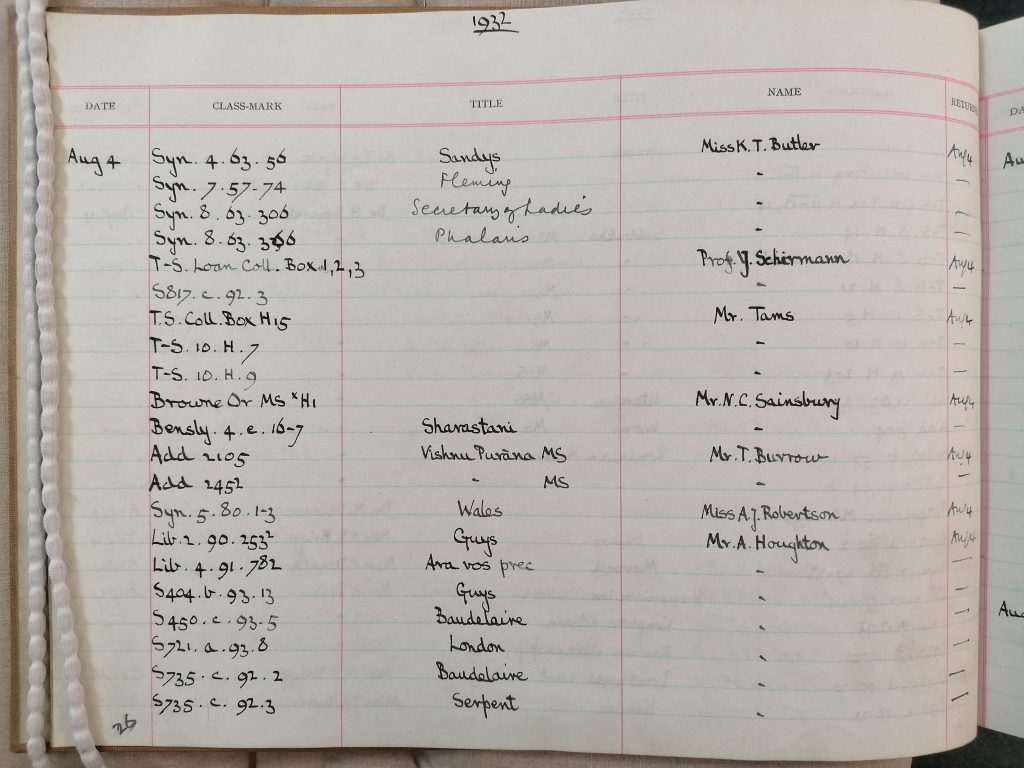
Rules for use of Rare Books have also changed significantly since the time of this register. Visiting scholars wishing to use Select Books at the time of the images above had to have a written introduction from a senior University member; now everyone registered to use the Library is welcome to use these collections. The dates of what is classified as a Rare Book have gradually changed, with the definition being pre-1800 as late as the 1970s, moving to pre-1850 by 2003. Now most printed works from across the Library printed before 1900 are read in the Rare Books Room, including those from other Special Collections such as Music and the Asian and Near Eastern collections. Readers in the 1960s would be asked to use a pencil only if they were looking at pre-1700 works; this rule now applies across all Special Collections, and it is hard to imagine someone working with eighteenth-century volumes and using a fountain pen. Our readers have adapted to these many changes as they have come, and we are very grateful for the forbearance of the current generation of Library members with the Covid safety Book a Visit system – a throwback of sorts to the days of the Select Books register of readers? – which has now been removed, with readers able to use these collections without booking an appointment.
Instead of needing to book an appointment and plan a long way in advance, we hope that the online requesting service will enable our readers to have a more flexible approach to their work. It is possible to put in requests at any time (including outside Library opening hours) and be informed when they are ready to consult, saving wasted journeys. The great majority of the Rare Books collections can now be requested through the online catalogues, with only a few exceptions. For pre-1990 Official Publications, and Royal Commonwealth Society collections, the majority of material is recorded in card catalogue format only. Records for these collections are being upgraded over time, and they remain accessible by filling in the standard paper request slip, or by emailing a member of staff. We are delighted to offer this new service to our readers and hope that it improves both efficiency and accuracy for students, teachers and researchers. Your feedback on the service is very welcome.

